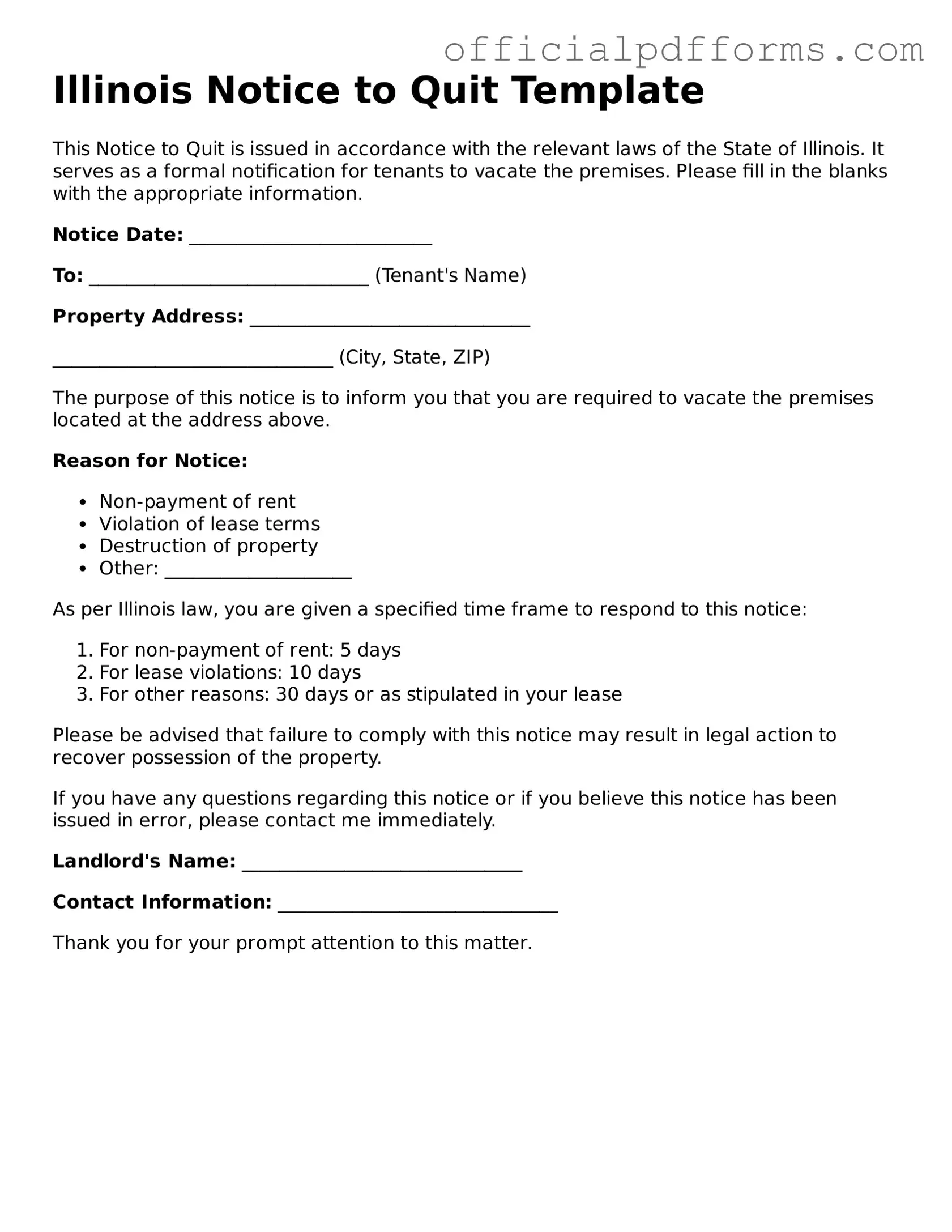The Illinois Notice to Quit form is a legal document used by landlords to formally notify tenants that they must vacate the rental property. This notice is typically issued when a tenant has violated the terms of their lease agreement or has failed to pay rent. The form outlines the reason for the eviction and provides a specific timeframe within which the tenant must leave the premises.
When should a landlord use the Notice to Quit?
A landlord should use the Notice to Quit when they need to terminate a tenancy due to specific reasons, such as:
-
Non-payment of rent
-
Lease violations, such as unauthorized pets or excessive noise
-
End of lease term without renewal
It is important to ensure that the reason for the notice aligns with the applicable laws and lease terms.
How much notice must be given to the tenant?
The amount of notice required varies depending on the reason for the eviction. Generally, the following timeframes apply:
-
For non-payment of rent, a 5-day notice is typically required.
-
For lease violations, a 10-day notice is usually sufficient.
-
For month-to-month tenancies, a 30-day notice is commonly required.
Always check local regulations, as they can differ by jurisdiction.
What happens if the tenant does not leave by the deadline?
If the tenant does not vacate the property by the deadline specified in the Notice to Quit, the landlord may proceed with legal action to evict the tenant. This often involves filing an eviction lawsuit in the local court. It is important for landlords to follow proper legal procedures to avoid complications.
Can a tenant contest a Notice to Quit?
Yes, tenants have the right to contest a Notice to Quit. If a tenant believes the notice is unjust or that they have not violated the lease terms, they can respond by communicating with the landlord or seeking legal advice. If the matter escalates to court, both parties will have the opportunity to present their cases, and a judge will make a determination based on the evidence provided.
